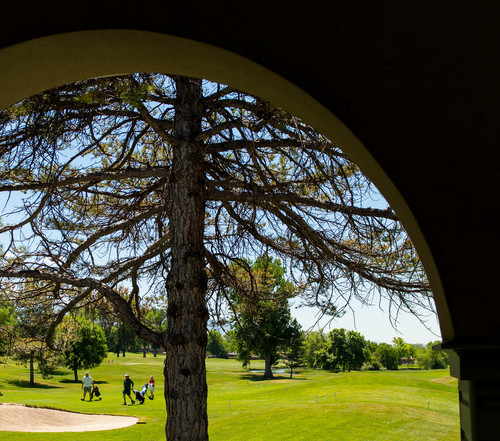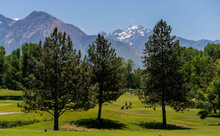This is an archived article that was published on sltrib.com in 2014, and information in the article may be outdated. It is provided only for personal research purposes and may not be reprinted.
Sorry, Salt Lake City golfers, but something's got to give.
The economics of the city's municipal golf courses are slowly deteriorating in the face of shrinking golf rounds and facilities that are themselves deteriorating.
Gone already is the par-3 Jordan River course, which will close this year, and the Wingpointe course at the entrance to Salt Lake City International Airport is likely gone when an impending rent increase kicks in. And reports prepared for the city raise the possible closure of the Glendale and Forest Dale courses and the closure or reduction of the Rose Park course.
The city's elected leaders are quick to point out that nothing has been decided, and they are pledging a deliberative process to resolve both a $500,000 annual shortfall in operating costs and a huge $23 million backlog on maintenance projects at the courses, including refurbishing restrooms, club houses and other facilities.
Golfers, of course, are in a panic. They've enjoyed relatively low greens fees and uncrowded courses for years, and many of them are retirees who say that they've earned the right to spend their golden years on the fairways. They also say they can't afford to pay more for that privilege.
Figuring out what to do is a complicated puzzle. It's been pointed out that the city waters its courses with treated culinary water and could save big dollars by using irrigation water, but that would require investment above and beyond the current maintenance backlog.
And there's a question of geographic fairness. While the city's west-side golfers face possible closure of up to three courses, the city isn't giving any discussion to closing the east-side courses of Bonneville and Mountain Dell because they are the most profitable.
Then there's the special case of Nibley Park course. It's one of the lesser-used courses and it's close to Forest Dale, but Nibley is a city course only because the Nibley family donated the land for it almost a century ago. If it stops being a golf course, it goes back to the Nibley descendants, who could then develop the land.
And that brings up another complication: open space. The city recognizes that even those who don't play golf like to see grass and trees. If they close courses, they want to try and maintain the open space. But that takes money, too. If a golf course is converted into a park, for instance, there still would be costs to maintain the park. And nobody pays greens fees to use a park.
But the counterargument is that a lot more Salt Lake City residents use parks than golf courses, and that is the most difficult reality golfers face. Their numbers are relatively small but their consumption of city recreation land is large. Good arguments can be made for saving each and every city course, but it appears they won't all make the cut.





